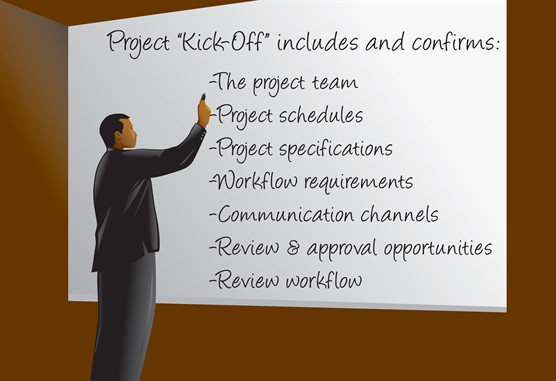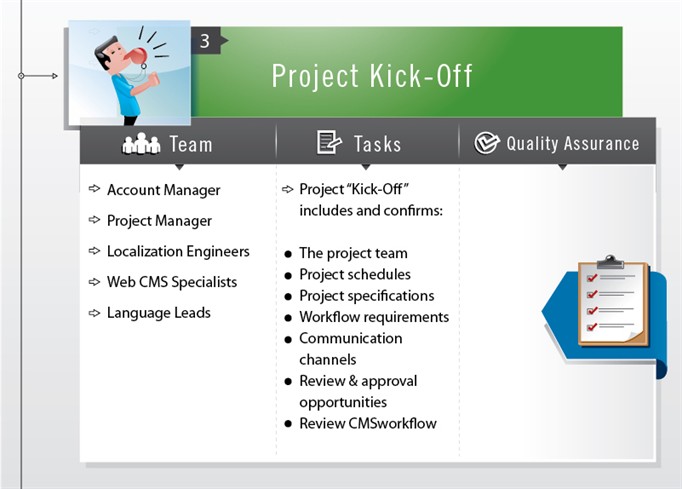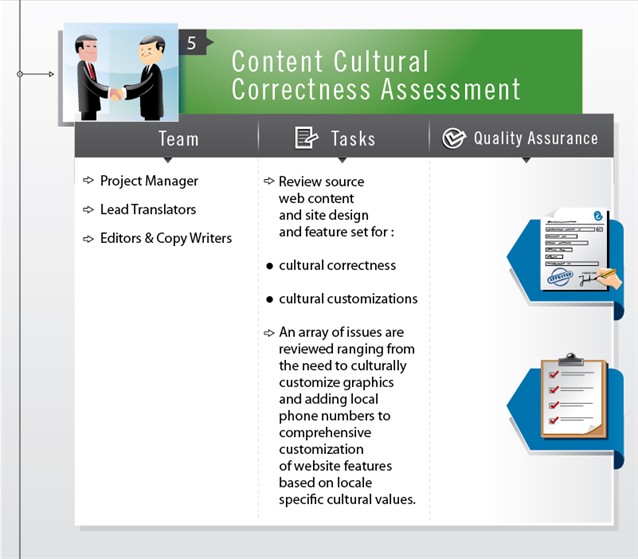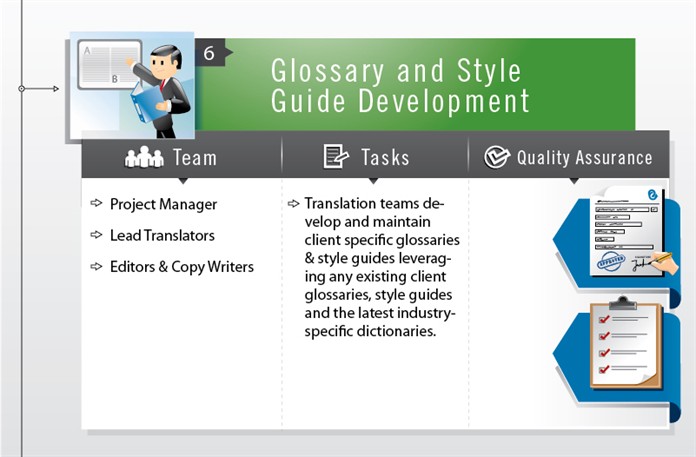Website Translation: Launch, Linguistics and Locales
Providing professional website translation and copywriting is both an art and a science. The science part of it requires organization, research, cultural understanding and development of a glossary and style guide, among other tasks. Each of these topics could be a blog of its own, but I wanted to touch on their place and importance briefly in the website translation process.
This blog is a continuation of our series on the process of translating a website. To read the other blogs in the series, please see:
- Website Translation: 14 Steps to an effective worldwide website! (Intro)
- Website Translation Quality Assurance and Client Review Process (Two Fundamentals)
- Website Translation: Reviewing Source Files and CMS Workflows (Steps 1-2)

Step 3: Project Kick-Off
Of course a translation project needs to be kicked-off. During a kickoff call or meeting, usually conducted by your assigned Project Manager, your translation services account team should cover a few items including:
- Who is on your translation project team?
- What is the final agreed upon schedule for deliveries?
- What are the final project specifications including source files, costs, deliverable formats?
- What are the workflow requirements?
- How will you communicate (emails, translation portal, etc…)?
- Who will review and approve the translations and at what steps in the process?
- What web content management system is being used and how?

Step 4: Subject Matter Training and Research
Even though translators specialize in specific subject matters, most specialize in several and cannot be experts in all fields. A well thought out and resourced translation team will have professional translators that do specialize in the subject matter and do their homework before starting projects. It is critical, especially for technical translations, that a detailed review, if not study, of any reference materials is conducted to ensure the team understands the subject matter. This actually occurs to a degree as the team is being assembled AND after all final source has been sent to the translation house.
In addition, client-specific training for translation teams related to subject matter is recommended. Product demos, collateral review, and basic training are helpful for the translation teams to understand the terminology, subject matter and intent of the content.

Step 5: Content Cultural Correctness Assessment
Research studies indicate that “attitude towards websites, interactivity and usability of websites, as well as purchase intentions at web sites are enhanced when sites are congruent with the target customers’ cultural predispositions”. (See “The Culturally Customized Web Site”, Elsevier, 2005). When taking your website global, there can be an array of issues that should be reviewed based on locale-specific cultural values. These website attributes range from the need to culturally customize photos and adding local phone numbers to adapting icons, colors and even navigation.

For an excellent book on cultural customization, see “The Culturally Customized Web Site: Customizing Websites for the Global Marketplace” by Nitish Singh, PhD.

Step 6: Glossary and Style Guide Development
Glossary development is a critical step in ensuring client terminology and industry-specific terminology are collected, researched, and consistently translated throughout the translation process. An ongoing effort of terminology management from website launch to content updates and maintenance is key. Glossary development is a collaborative service and is best completed with client review and approval.
A Style Guide is a reference manual that records how certain terms should be translated or how company specific names or products should be presented. The Style Guide also provides language specific grammatical rules and advice, mainly focused on stylistic and correctness issues (i.e. use infinitive for application buttons, do not use gerund for title chapters, etc.).
Adherence to the Style Guide is of the utmost importance in order to maintain stylistic quality and linguistic consistency across a team of localizers and reviewers working on the same project. Style guides will also dictate how certain documents, such as annual reports or labels for packaging, should be presented so that those specs are clear and understandable to all parties involved in their production.

